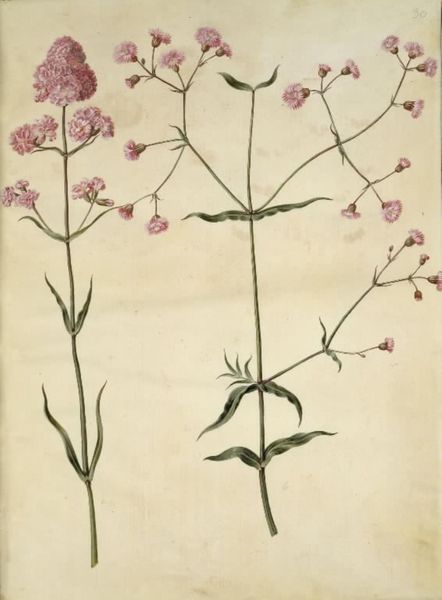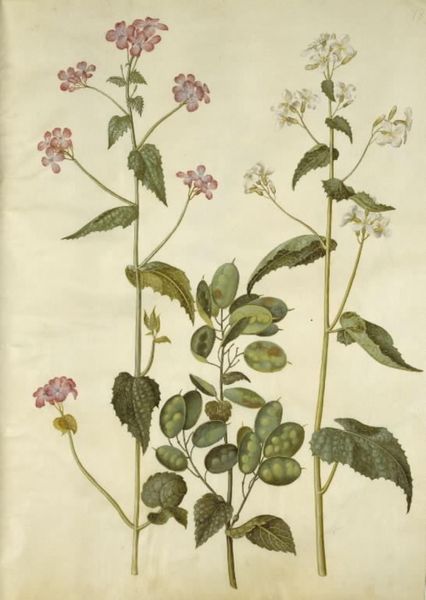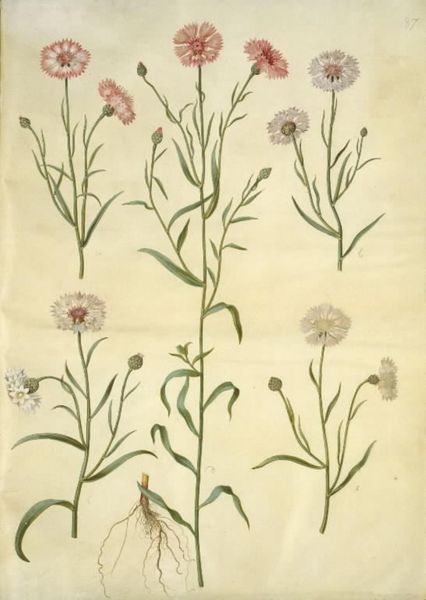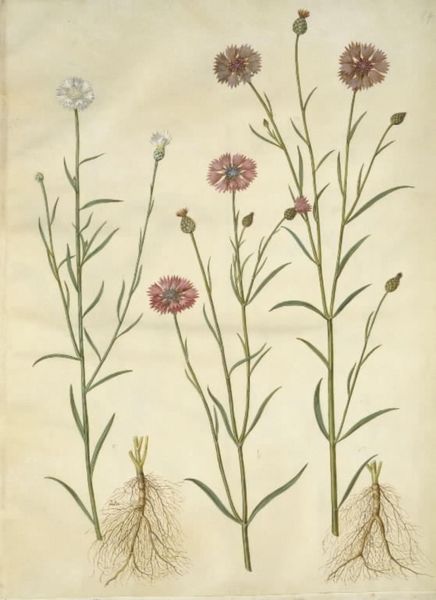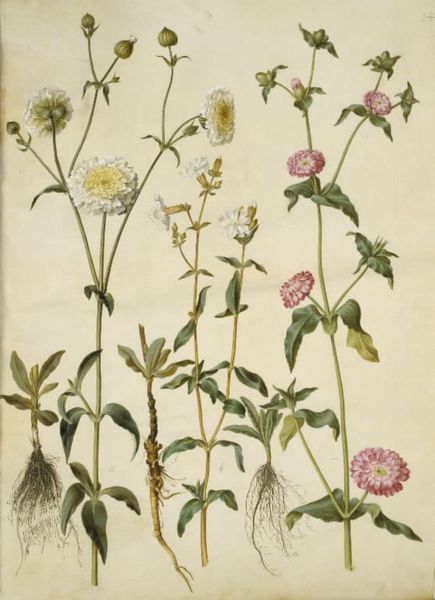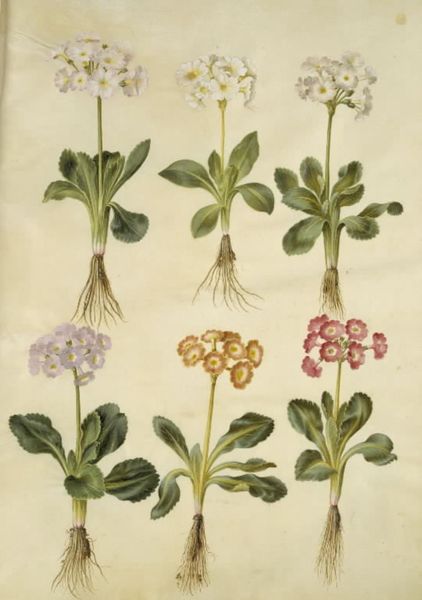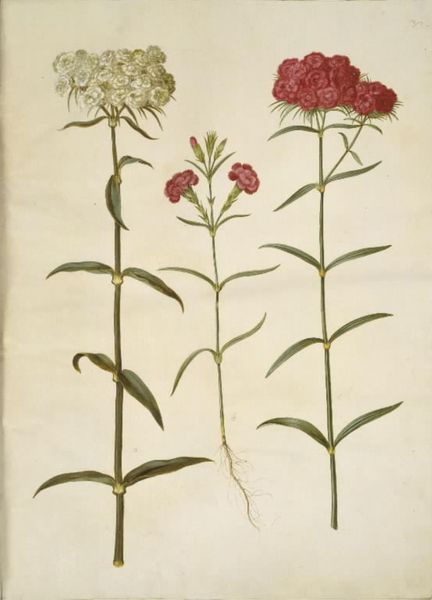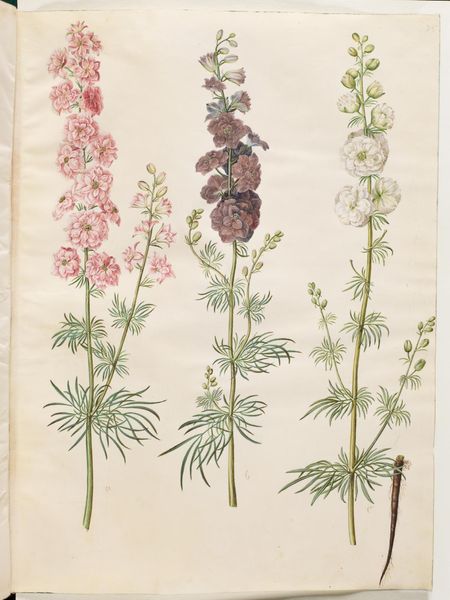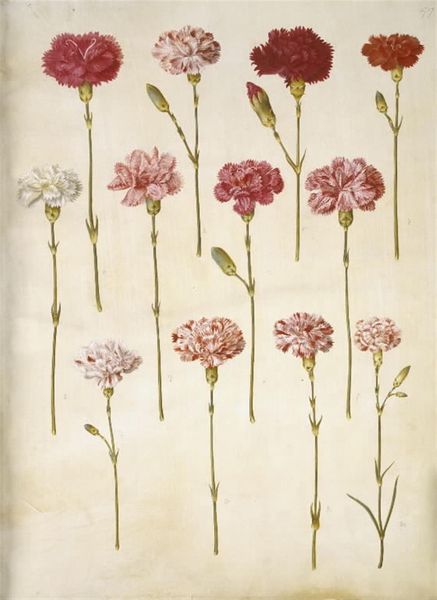
Saxifraga paniculata (klippe-stenbræk); Silene viscaria (almindelig tjærenellike); Silene armeria (knippe-limurt); 1649 - 1659
0:00
0:00
drawing, gouache, watercolor
#
drawing
#
water colours
#
gouache
#
watercolor
#
watercolour illustration
#
history-painting
#
botanical art
#
watercolor
Dimensions: 505 mm (height) x 385 mm (width) (bladmaal)
Curator: Looking at this work, I'm struck by its delicate precision and the subtle variations in color. There's something almost meditative about the way each stem is rendered. Editor: Indeed. We're currently observing a watercolor and gouache work by Hans Simon Holtzbecker created between 1649 and 1659, residing here at the SMK, the Statens Museum for Kunst. Curator: Holtzbecker, I see that meticulous eye for detail – not just in the flower heads but also the roots, clinging like secrets beneath the soil. I can’t help but think about the history of flower painting as it was developing through the 17th Century. What meanings and hidden depths might be there? Editor: Botanicals at the time weren’t just about pretty pictures; they were a form of scientific documentation, a way to classify and understand the natural world. Holtzbecker's approach reminds us that the beauty of plants mirrored humanity's desire for knowledge and control, expressed through symbol and classification. Curator: But control? There’s something unruly about how they sit on the page; it's controlled, yes, but that doesn't hide the sense that each of these plants are about to stretch and yawn and break free! I like that push and pull between freedom and control here. Editor: The stems almost reach out to something intangible, evoking narratives that connect heaven and earth, the seen and unseen. Curator: You've unlocked the visual tension in those reaching stems; their energy wants to be translated. It is a testament to how deeply he understood his subject, beyond mere representation. Editor: Reflecting upon Holtzbecker's arrangement, these humble garden flowers hold cultural memory and enduring themes that connect us through time. Curator: In the end, there's still a bit of mystery remaining. What were his specific intentions? We are left with only the images and, for me at least, a bit of reverie.
Comments
No comments
Be the first to comment and join the conversation on the ultimate creative platform.
